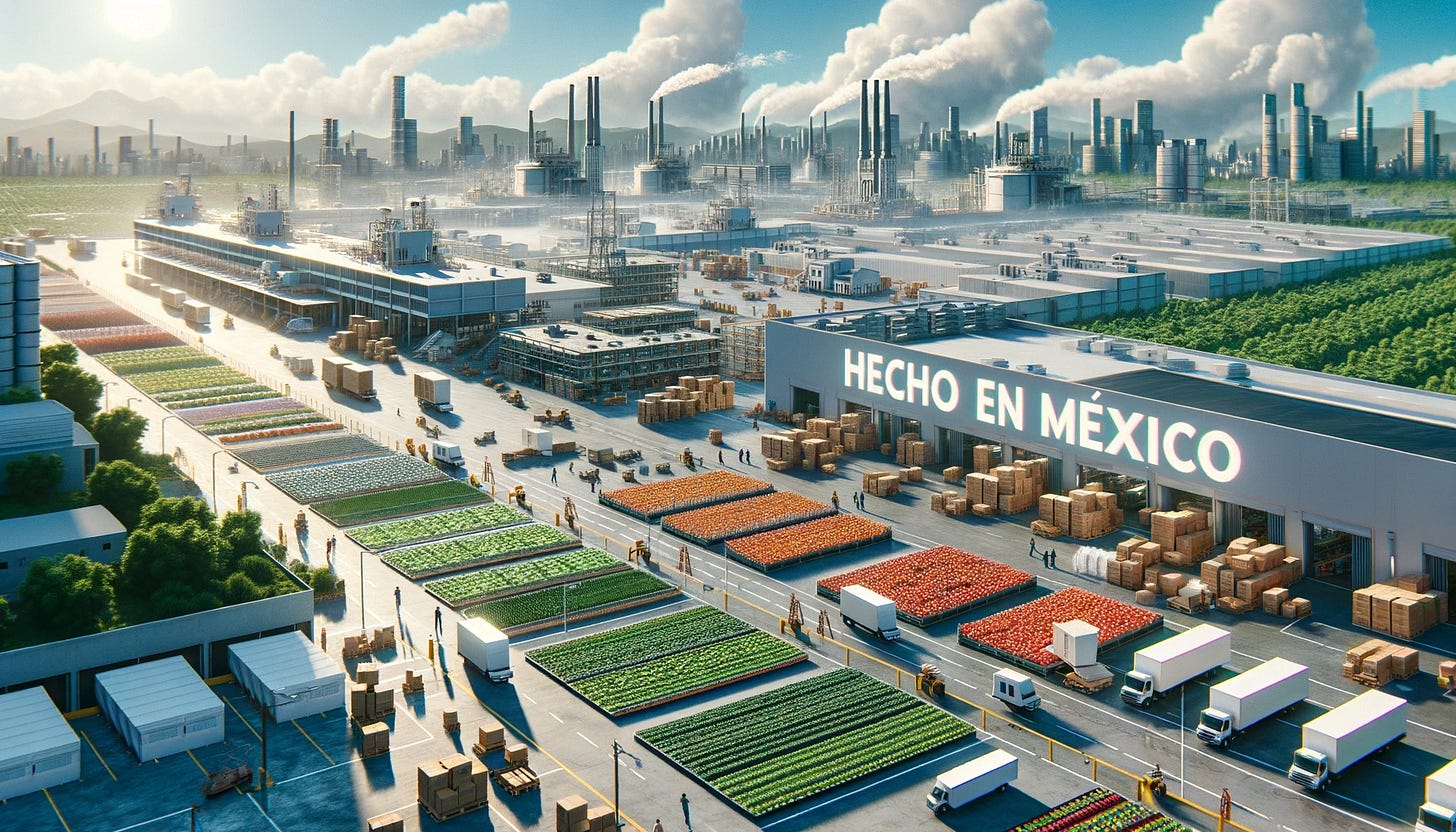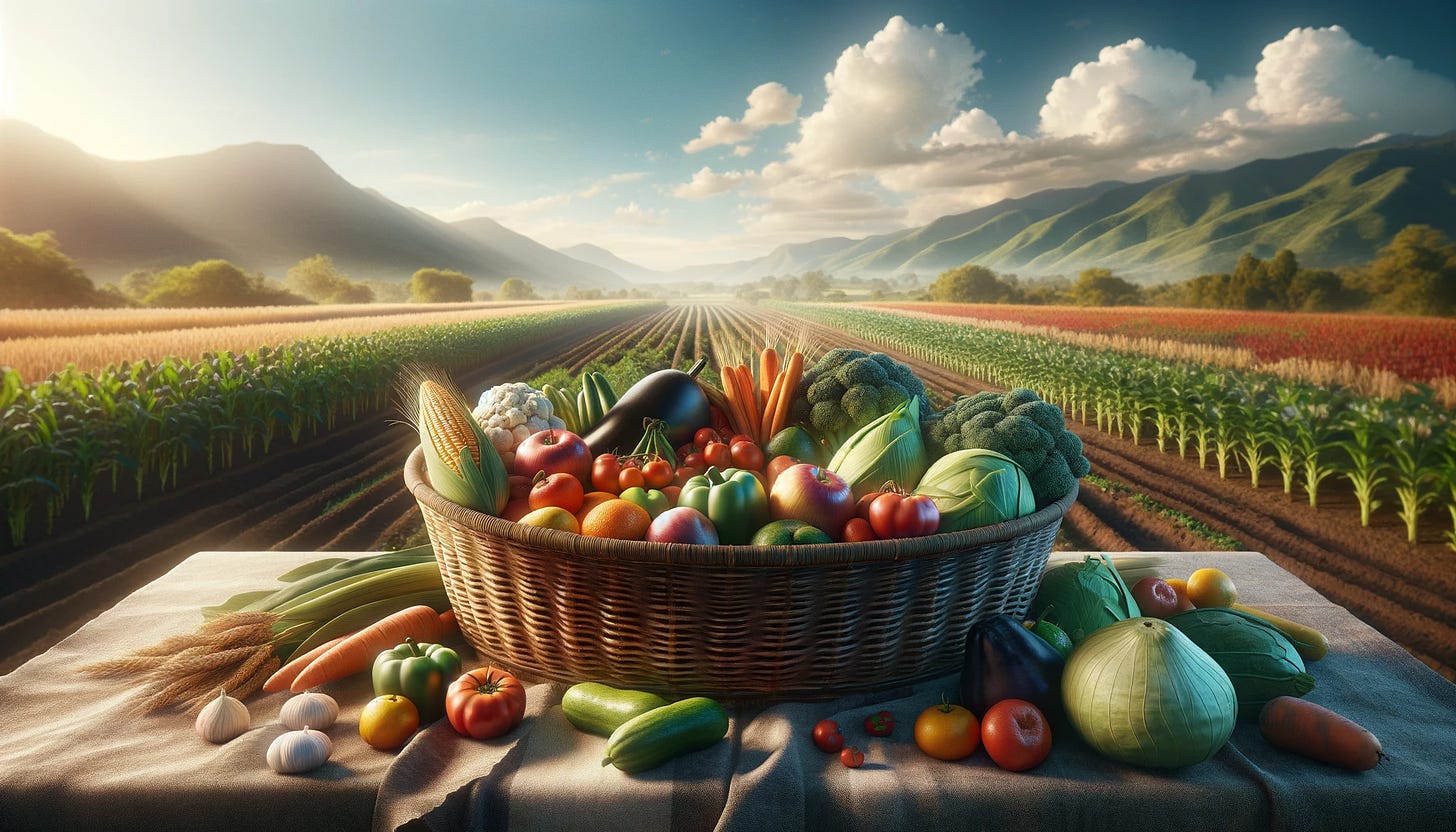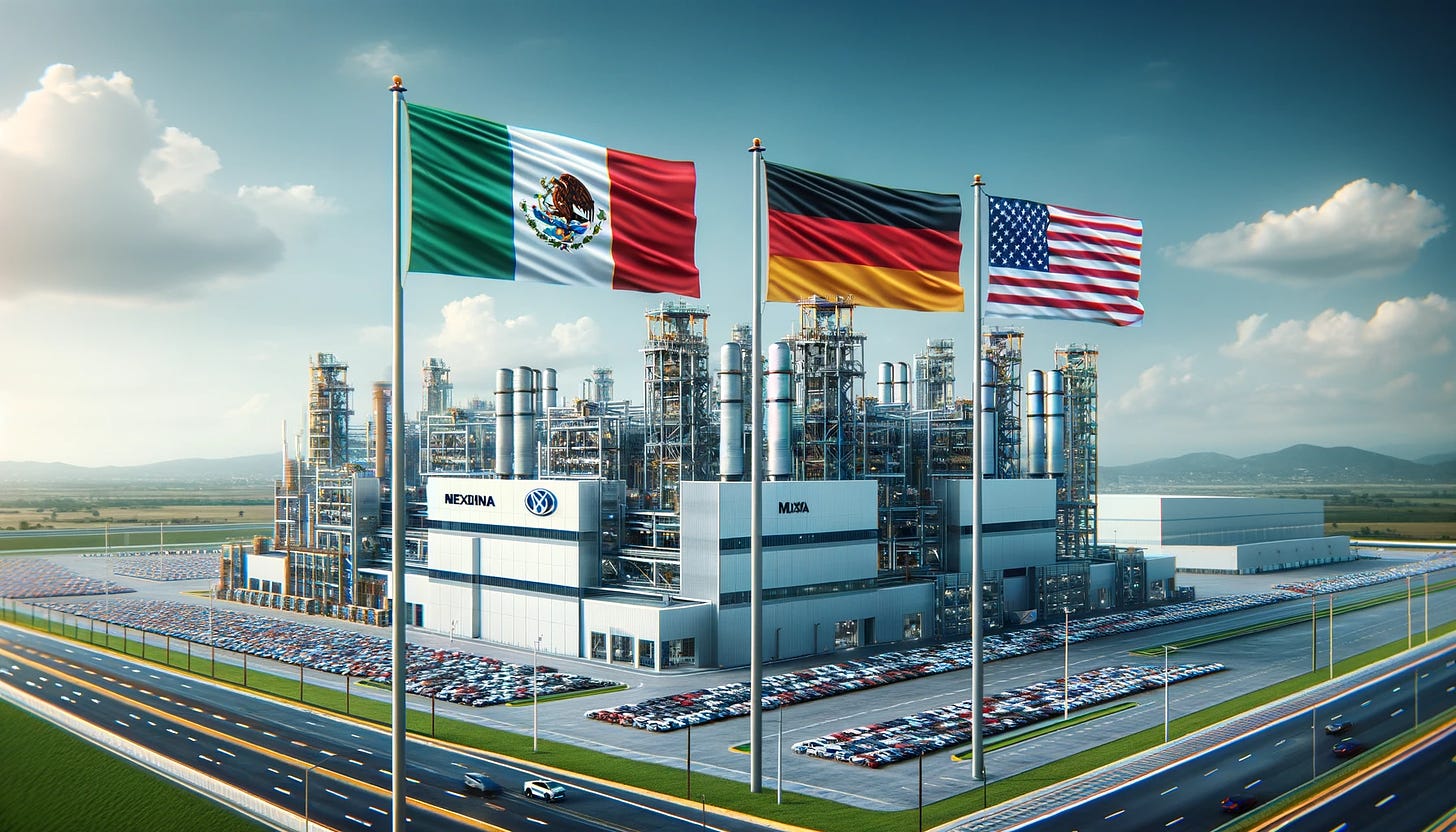Issue #3: Hecho en Mexico / Made in Mexico
After a busy trip to Laredo, TX, I decided to cover what moves through this amazing border city. With only 250k people, it's so much bigger than the population would tell you.
The last week in Laredo reminded me of some of the reasons why I love cross-border freight so much. There is this unique culture that exists in Laredo TX, the perfect blend of American and Mexican cultures. You walk into a meeting and find out that the last meeting was with this guy’s cousin and the next meeting is with his compadre (similar to a god-parent). All these people compete, but they’re friends or family members at the same time. Somehow, there’s enough business to go around for hundreds of trucking companies, customs brokers, and warehouses to succeed in Laredo.
We spent the week meeting with carriers, customs brokers, and warehouse owners who all participate in cross-border supply chain and logistics. Each of them has their own version of a niche within a niche and they all fit uniquely into this incredibly complex process. My co-founder/CTO and our founding team of engineers had the opportunity to learn about every step of this process as we work to build technology that will simplify and digitize this process.
Grown In Mexico
We visited one of the largest Mexico-based refrigerated carriers, who owns a cold chain facility in Laredo, where we saw products from Mexico that range from tomatoes, celery, peppers, and lettuce to chocolate and peppermint-flavored candies that we all remember from our childhoods. Down the street, we passed a customs broker that clears a massive amount of avocados, locally known as the Queen of Avocados. One interesting tidbit we learned from the visit is that most produce grown in Mexico is grown in enormous vertically integrated greenhouses. The tomatoes look and smell like they came right out of the ground, but in fact, they came from intricately planned greenhouses.
These products just make up a few of the commodities that are produced fresh in Mexico and exported to the United States. You can find the full list below:
CPG - Food, beverages, beer, tequila, mezcal
Fruit - avocados, limes, lemons, mangoes, papayas, guavas, bananas, and melons
Vegetables - tomatoes, bell peppers, onions, cucumbers, squashes, and hot peppers (incl. jalapeños, serranos, and ghost peppers)
Grains - Corn, wheat, rice
Legumes - Green beans, black beans, pinto beans, kidney beans
Additional agricultural products - Peanuts, sunflower seeds, coffee, cocoa, sugar, and agave
In 2022 alone, Mexico’s agricultural exports set a new record of just over $50 billion USD.
Manufactured in Mexico
On the other side of the supply chain spectrum, there’s a massive manufacturing footprint throughout Mexico and it’s only continuing to grow. The industrial sector in Monterrey keeps getting larger and larger, and Tesla isn’t even close to finishing construction on their new factory that will produce up to two million electric cars per year. Just wait until that plant is up and running. Just take a look at the Google Maps of any industrial area in Mexico and you’ll find tons of brands you recognize of American, Asian, and European companies that are investing in Mexico.
Automotive parts, cars, and other transportation-related equipment
Appliances, Electronics, and Computers
Chemicals
Primary Metals
Machinery
Manufactured Metal Products
Electrical Equipment and components
Plastic and Rubber Products
For each of these categories, you can divide them up deeper and you can find 25+ brands per category that are producing those goods in Mexico. Every automotive OEM and most of their suppliers have a presence in Mexico. Most TV and appliance manufacturers do as well. It makes too much sense not to manufacture there.
What’s going on in Laredo? What about the other border cities?
An estimated 17,000 truckloads a day cross through Laredo, which represents a third of all cross-border freight flow, with nearly every type of product moving through this major border city. The reason why Laredo has so much volume is related to the infrastructure that exists in Laredo and south from there. Monterrey is approximately 150 miles south, which makes up one of the largest shipping markets, alongside Mexico City, el Bajío, Guadalajara, and Puebla.
What I heard in Laredo about the Market
The general sentiment right now is that, in spite of nearshoring, and historic growth happening in Mexico, the market still feels slow, which is consistent with how the U.S. market has been for quite a while. Carriers are working hard to maintain the consistent freight they have but are definitely looking for additional opportunities. Brokers and shippers are seeing excess capacity offered up daily out of most markets in northern Mexico, with some tightness still being felt in Guadalajara and Mexico City. On the temperature control side, with produce season in the rear-view mirror, carriers are actually looking for more northbound freight as they have more meat, pork, and chicken shipping south than capacity allows.
What’s coming next?
Eventual Volume Growth: I believe we’ll see volume start to pick up coming out of Mexico in the tail end of 2024. We’re only seeing the tip of the iceberg with respect to nearshoring and haven’t felt that boost yet the way we will in late 2024 and in 2025. Companies have set their plans to more manufacturing to Mexico but it takes time to execute on those plans.
New Capacity: New trucking companies will continue to sprout up in Laredo and other border cities as carriers look to ride the nearshoring wave. How and when they grow their fleets will depend on volume growth as interest rates have made it difficult to borrow capital to buy trucks and trailers ahead of the growth curve.
New Construction: We saw a lot of construction in Laredo where warehouses are being built up and down I-35, the highway that runs from Laredo up through San Antonio and Austin, ultimately up to Dallas, which is a heavily popular corridor for freight moving into and out of Mexico.
Upcoming Border City Visits: I’m looking forward to making similar trips to El Paso, Calexico, and the valley (Pharr and Brownsville) in the coming months as we build out our product.
Up Next Week: I’ve had an opportunity to meet a ton of startups recently, making investments in a handful over the past year, and plan to talk more about startup life and startups I’m excited about in next week’s newsletter.
I’m considering doing an AMA on X/Twitter in the next couple weeks - respond to or comment on this newsletter, or drop me a DM if you’d find that interesting, along with potential questions you’d love to see answered. Happy to cover anything from building a startup to being acquired to general logistics strategy to cross-border freight!






